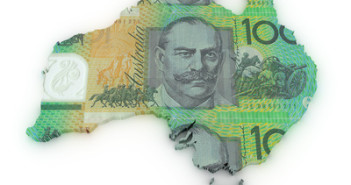The Reserve bank of Australia jumped on the bandwagon last week following countries such as Canada by cutting Interest rates in an effort to kick start the economy after the end of the mining boom which has underpinned the Australian economy for more than 10 years.
The RBA cut the official cash rate by 25 basis points to 2.25% in a move that caught most analysts off guard and sent the Aussie dollar tumbling.
Guest Post by Andrew Masters from FiboGroup
In his monetary statement after the interest rate decision Reserve Bank governor Glen Stevens noted that the mining sector continues to decline, dragging down the price of Australia’s biggest export, Iron ore which the local economy is so reliant on.
He also noted that the fall in the oil price is beginning to take its toll on the world economy,
“Commodity prices have continued to decline, in some cases sharply. The price of oil in particular has fallen significantly over the past few months. These trends appear to reflect a combination of lower growth in demand and, more importantly, significant increases in supply. The much lower levels of energy prices will act to strengthen global output and temporarily to lower CPI inflation rates†Stevens saidâ€
On the topic of the Australian dollar, Stevens mentioned that by historical standards the currency remains overvalued considering the current commodity prices, which is affecting the balance of growth ,
“The Australian dollar has declined noticeably against a rising US dollar over recent months, though less so against a basket of currencies. It remains above most estimates of its fundamental value, particularly given the significant declines in key commodity prices. A lower exchange rate is likely to be needed to achieve balanced growth in the economyâ€
The RBA has made no secret in recent months that it would like to see the Australian dollar at US75c or less to help the central bank reach it inflation target for the year.
A reduction in interest rates may put further pressure on property prices with Stevens noted that the bank will keep an eye on developments and act accordingly,
“Credit growth picked up to moderate rates in 2014, with stronger growth in lending to investors in housing assets. Dwelling prices have continued to rise strongly in Sydney, though trends have been more varied in a number of other cities over recent months. The Bank is working with other regulators to assess and contain economic risks that may arise from the housing marketâ€
One researcher who thinks the real estate market is in dire straits, and is evident by looking at some other countries experiences is Philip Soos, a researcher at Australia’s Deakin University, who wrote in a report that ever rising property prices will only create a ponzi /pyramid scheme where buyers will eventually be left holding the bag,
“Australia’s housing market is a classic pyramid or Ponzi scheme like the ones we previously saw in Ireland, the USA and Spain, and the RBA lowering rates is only going to add fuel to the fire,†Soos wrote.
Some analysts predict that the RBA will cut interest rates again for the last time in March, including Scott Haslem and the economics team at UBS by noting that another rate reduction would help offset the recent falls in commodity prices as well as keep the Australian Dollar around the US75c mark,
“This is because the easing of financial conditions from the combined impact of 50bp of rate cuts in 1H15 and an AUD that’s likely to continue lower toward our USD0.75 forecast, is likely to be sufficient for the RBA to stop cutting at 2%, given ongoing signs of improved consumer & housing growth, and our forecast for some steadying in global growth in 2H15.†the bank noted.
In our latest podcast, we do an Aussie Analysis, Greek Grindings and Oil Optimism.
Subscribe to our iTunes page



